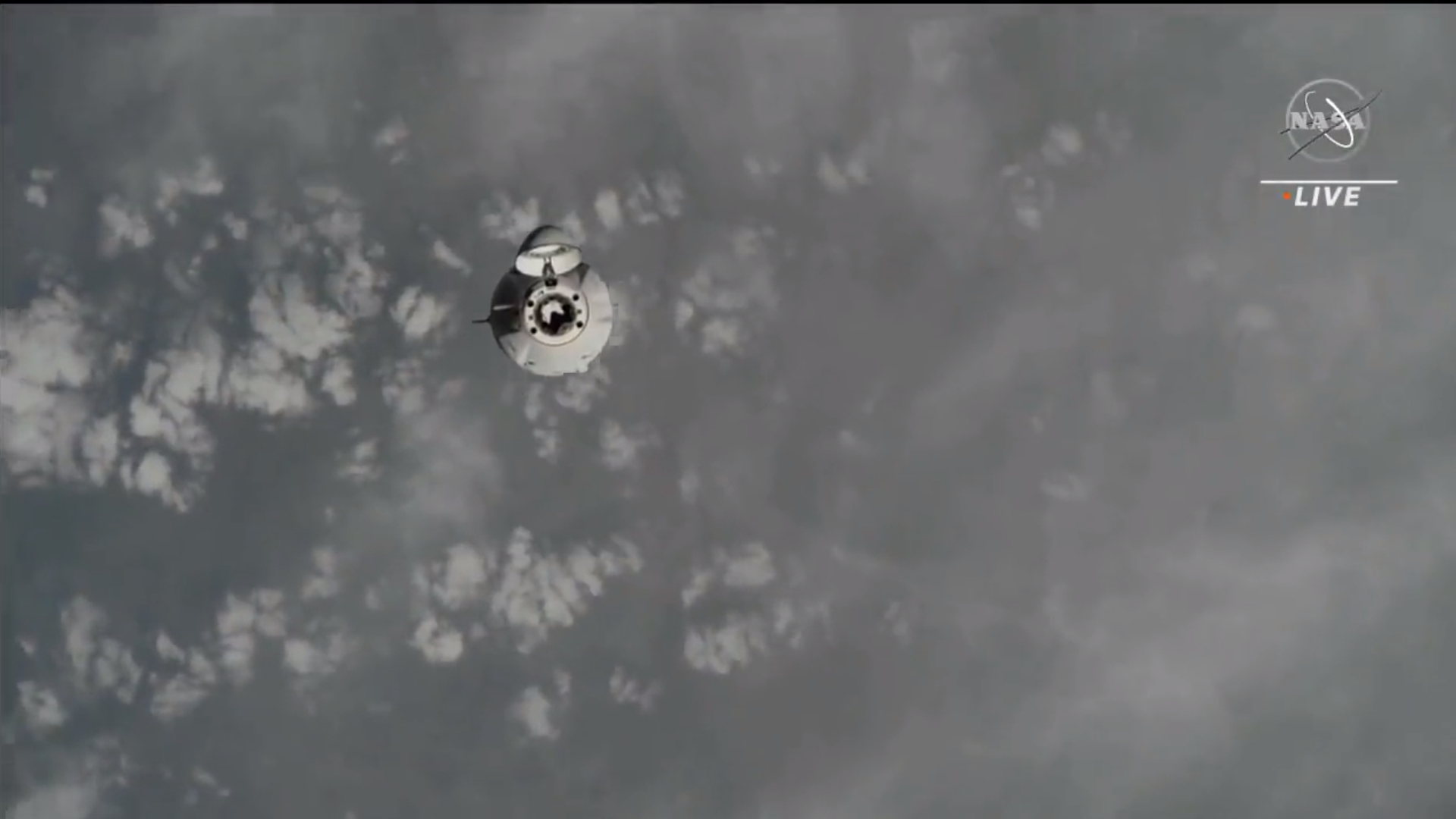SpaceX Dragon CRS-28 cargo capsule docks with space station to deliver vital supplies

A SpaceX Dragon cargo capsule arrived at the International Space Station early Tuesday morning (June 6) with 7,000 pounds (3,175 kilograms) of supplies and scientific experiments on board.
The robotic Dragon launched atop a SpaceX Falcon 9 rocket on Monday (June 5) from NASA's Kennedy Space Center in Florida and reached the orbital outpost at 5:50 a.m. EDT (0950 GMT) after an 18-hour orbital chase. The capsule will remain docked to the space-facing port of the orbiting lab's Harmony module for about three weeks.
The current Dragon mission is called CRS-28, because it's the 28th flight SpaceX is flying for NASA under a series of Commercial Resupply Services contracts. Among the mission's cargo are two more International Space Station Roll Out Solar Arrays, or iROSAs, which will be installed on the orbiting outpost's exterior by spacewalking astronauts to augment its power output.
Related: 8 ways that SpaceX has transformed spaceflight
Getting all the iROSAs up and running will boost the ISS' electricity generation by 20% to 30%, NASA officials have said.
The science gear delivered by the capsule includes a technology demonstration for autonomous space station docking systems called CLINGER and Genes In Space-10, which will test a way to measure the length of telomeres in microgravity.
Telomeres are regions of DNA at the end of a chromosome. Telomeres shorten as a person gets older, a phenomenon associated with the onset of some cancers and other diseases, as well as general age-related decline.
Breaking space news, the latest updates on rocket launches, skywatching events and more!
Dragon is expected to stay at the ISS for 21 days on CRS-28, then come back down to Earth for a parachute-aided ocean splashdown.
Dragon is the only cargo craft capable of making such safe returns. The other two currently operational robotic freighters — Russia's Progress vehicle and Cygnus, which is built by American company Northop Grumman — are designed to burn up in Earth's atmosphere when their time in orbit is done.

Michael Wall is a Senior Space Writer with Space.com and joined the team in 2010. He primarily covers exoplanets, spaceflight and military space, but has been known to dabble in the space art beat. His book about the search for alien life, "Out There," was published on Nov. 13, 2018. Before becoming a science writer, Michael worked as a herpetologist and wildlife biologist. He has a Ph.D. in evolutionary biology from the University of Sydney, Australia, a bachelor's degree from the University of Arizona, and a graduate certificate in science writing from the University of California, Santa Cruz. To find out what his latest project is, you can follow Michael on Twitter.
